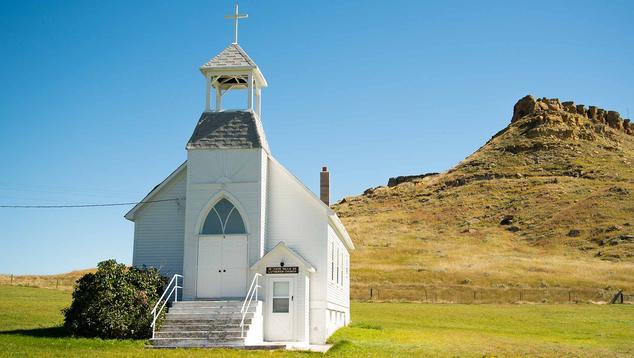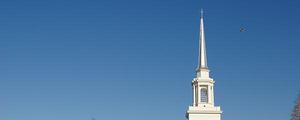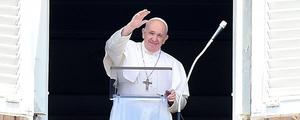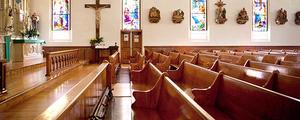Gallup and a number of other survey research organizations are continually measuring and analyzing Americans' religious behavior and how it relates to other aspects of American culture, politics and society. What follows is a discussion of several interesting recent developments derived from this research.
1. "Nones."
Several studies have suggested a stabilization in the increase of "nones" in the U.S. -- the percentage of the adult population who, when asked, say they have no formal religious identity or affiliation. Gallup data, for example, reflect the dramatic increase in the proportion of American adults who say they have no religious preference from as low as 1% in the 1950s to the range of 20% in more recent years. Gallup's yearly averages of nones from 2017 to 2020 were 20%, 20%, 21% and 20%, respectively. And in the latest survey, from last May, 16% say "none." Similarly, a report by the Public Religion Research Institute shows the same type of leveling off or even a slight drop -- from a high of 25.5% nones in 2018 to 23.3% in their latest 2020 report. There are many ways to measure religiosity, and other organizations may show data that differ in the months to come. And, as will be discussed below, the long-term impact of the pandemic on religious identity is still an unknown. But the "rise of the nones" may be moderating.
2. Who Are the "Nones"?
A cottage industry of sorts focuses on analysis of the "nones," with researchers trying to figure out who they are and why they have been increasing across the decades. Some may consider nones to be synonymous with atheists or agnostics, but there is more to it than that. Sociologists Joel Thiessen and Sarah Wilkins-Laflamme[1], for example, divided nones into subgroups, and while the largest of these groups -- "inactive nonbelievers" -- fits the stereotype of completely irreligious people, the authors estimate there are substantial numbers in the none category who are "spiritual but not religious" and "inactive believers," using the authors' terms.
Gallup research shows that a nontrivial percentage of nones say religion is at least fairly important in their lives, and Pew Research similarly concluded that "a significant minority of 'nones' say that religion plays a role in their lives." One partial explanation for the rise of the nones centers on a hypothesized "change in public self-labeling." Years ago, people who did not attend religious services and were not particularly religious apparently felt it important to state a religious identity in response to a survey question (resulting in 99% of Americans having a religious identity). Today, individuals with the same lack of active religiosity may feel more comfortable telling a survey researcher they have no religious identity. In other words, religious identity has shifted from being an ascribed characteristic (that is, something one is born with like age and race) to an achieved characteristic (that is, something that voluntarily develops over a person's lifetime, such as education and geographic location of residence).
3. The Young Feel Disconnected.
The younger the person (among adults 18 and older), the higher the probability the person does not have a formal religious identity. I discussed the implications of these age differences in religiosity a few years ago and noted the complexities involved in trying to predict future developments. A key question focuses on the probabilities that young people will replicate the historical pattern of returning to the religious fold as they move through their 30s. The answer to that question, in turn, is related to future trends in marriage rates and fertility, both strong correlates of religiosity.
An interesting study recently reviewed in the Wall Street Journal highlighted one challenge that religious organizations face in their efforts to appeal to young people. The study, conducted by the nonpartisan, nonprofit Springtide Research Institute[2], showed that young people are more likely to personally care about a list of moral and values issues than they perceive is the case for faith and religious communities. Religious people in general today are more conservative on social issues, while young people are more liberal, highlighting another disconnect that potentially creates barriers between young people and their decision to involve themselves in religious organizations.
4. Geography, Parents and Religiosity Among Young People.
Both the religiosity of a teenager's parents and where that teenager lives can affect the teenager's religious development (similar to how the politics of one's parents and where one lives affects one's partisanship). An interesting new study from two Purdue University sociologists -- Charissa Mikoski and Daniel V.A. Olson -- shows how these factors can interact. Mikoski and Olson find, not surprisingly, a strong relationship between parents' religiosity and the religiosity of their teenage sons and daughters. They also find that teenagers who live in U.S. counties where their parent's religious tradition is highly prevalent are more religious than teenagers who live in counties where their parent's religious tradition is in the minority.
In other words, if a teenager's parents are Baptist, and the county where they live is predominantly Baptist, then the teenager has a high probability of being religious themselves. An interesting twist, however, is the finding that the impact of the religious characteristics of the county of residence is muted when the teen's parents are highly religious. But if parents are not highly religious, the religious tradition in the county of residence has more of an impact on the teen's religion. In short, if parents want their children to be religious, then they themselves (the parents) need to be religious and, if they are not, they at least need to live in an area where there are many other people who share the parents' religious tradition.
5. COVID-19 and Religious Service Attendance.
Self-reported religious service attendance had been trending downward before the pandemic, as noted by Gallup and numerous other survey organizations. The pandemic, however, created one of the most disruptive events in U.S. religious history, and today we are faced with the important question of what is going to happen to U.S. worship behavior in the long term.
Gallup data asking broadly about religious attendance show what I would call a minor dip in 2020 and 2021, but not a huge drop. For example, 30% of Americans in May of this year report having attended church, synagogue, mosque or temple -- in person or remotely -- in the previous seven days, down just a few points from earlier readings. A separate question in Gallup's May survey asked how often one usually attends religious services, and found that 47% claim they usually attend at least once a month, not too different from readings in 2018 and 2019 (when the question was asked without the word "usually").
A follow-up probe to Gallup's "last seven days" question shows that in April 2020, as the pandemic was dominating U.S. culture, most of those who attended within the previous seven days reported attending remotely. By May of this year, the majority of those who had worshipped in the previous seven days said they had attended in person. Pew Research also shows an increase in in-person attendance (and a decrease in virtual attendance) as of September of this year. Overall, while it is clear that some Americans are going back to church, I think it is still too early to reach judgments about the long-term impact of the pandemic on Americans' personal religiosity and worship patterns.
6. Resurgence of Christian Schools?
The impact of the pandemic has rippled through almost all aspects of American society, and schools have been no exception. In addition to the obvious disruption caused in normal school patterns over the past year and a half, there has been an apparent increase in the viability of other, nontraditional school modalities.
Gallup's annual August update includes a sample of parents of K-12 kids, and reflected a bump in reports of home schooling last year that has settled down to more normal patterns in this year's August survey. The data don't reflect any highly unusual upticks in private or parochial schools this year; public school attendance remains by far the dominant school choice. Still, there may be something going on, at least according to reporting by the New York Times religion reporter Ruth Graham, whose recent news report was entitled "Christian Schools Boom in a Revolt Against Curriculum and Pandemic Rules." Graham presents case studies of Christian schools that have grown dramatically over the past several years. She also presents data from the Association of Christian Schools International that claim enrollment gains of 12% over the past school year. (Enrollment in Roman Catholic schools, she reports, has continued to decline.)
Whether the anecdotal evidence and statistics really represent a "boom" in Christian school enrollment can be debated, particularly because Gallup's broad indicators haven't picked up any surge. But the combined impact of the pandemic and the recent controversies over critical race theory and other hot-button issues relating to public school curriculum could certainly affect the appeal of church-related schools going forward.
7. Religion and Vaccine Hesitancy.
Recent headlines such as "White Evangelical Churches and the Crisis of Vaccine Hesitancy" have highlighted the relationship between religion and willingness to get vaccinated against COVID-19. Data from the Kaiser Family Foundation from the summer in fact did show that the percentage of white evangelical Christians who had received a vaccine at that point was significantly below average.
It's not clear, however, how much of a crisis in vaccine acceptance is directly related to white evangelical identity per se. Americans who are classified as white evangelical Christians also skew Republican and are more likely to live in the South, characteristics strongly related in and of themselves to vaccine hesitancy. This makes it difficult to determine if there is something about religion per se that is directly related to vaccine hesitancy, or if being a white evangelical Christian is instead a correlate of other characteristics that are more determinative.
But some new and interesting research from Pew shows that there could be a direct connection between one's religion and one's views on vaccination. The Pew data show that among those who attend religious services, 61% trust their clergy or religious leadership at their house of worship to advise them about vaccines[3], about the same as trust public health officials such as those at the Centers for Disease Control and Prevention, and more than trust their local and state elected officials and the news media. Only one's primary-care doctor scores higher on this trust measure.
Sources
[1] https://www.amazon.com/None-Above-Nonreligious-Identity-Secular/dp/1479860808
[2] https://springtideresearch.org/the-state-of-religion-2021-digital-edition/?page=34
[3] https://www.pewforum.org/2021/10/15/most-americans-who-go-to-religious-services-say-they-would-trust-their-clergys-advice-on-covid-19-vaccines/




